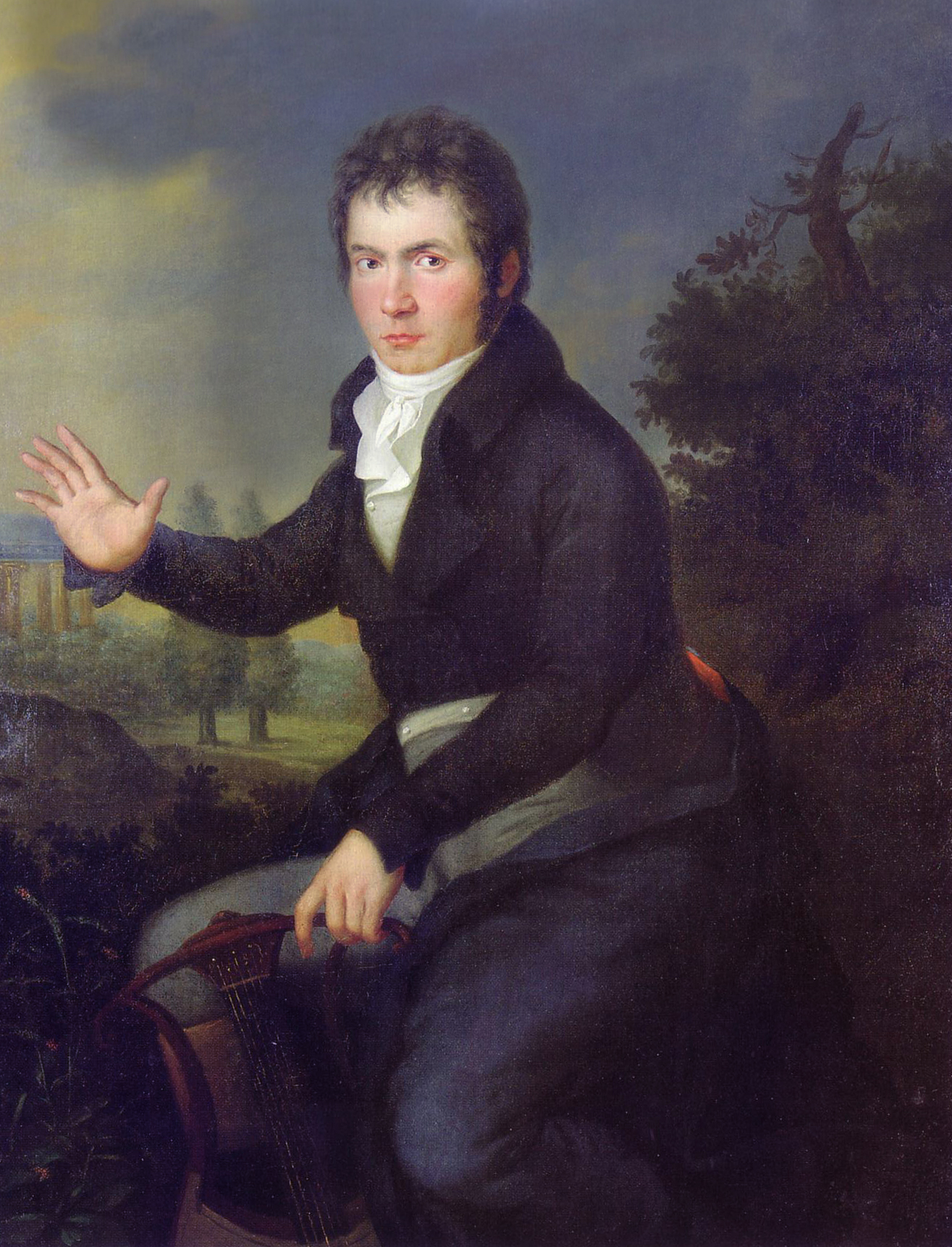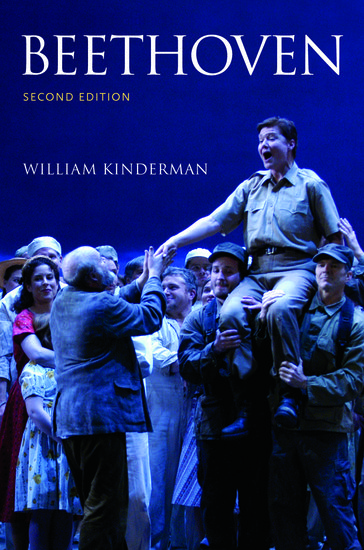By William Kinderman
Our fascination with creativity is a timeless and universal phenomenon. Since Greek antiquity, its most telling embodiment has been Prometheus: that heroic benefactor of humanity who stole the fire whose vital sparks sustain science and the arts. In more modern times, it is the fire of the imagination that is understood to illuminate and guide the creative mind, transforming the conventions of culture. For Ludwig van Beethoven, at the threshold of the nineteenth century, the challenge retained its force: his first major piece for the stage was the ballet music to “The Creatures of Prometheus,” op. 43. That work in turn became the stepping-stone to a pivotal masterpiece of fiery daring: the Eroica Symphony, completed in 1804.
In the world of art, the notion of a work emerging through long toil and unfailing vision is perhaps most readily associated with sculptors such as Michelangelo or Rodin. A prolonged creative process with intermediate stages in the form of models, studies, sketches, and earlier versions, is illustrated in the work of Leonardo da Vinci and many others. Among writers, one thinks of Goethe’s long preoccupation with Wilhelm Meister or Faust, or Jean Paul Richter’s prolonged work on his novels.

In the age of Romanticism, the emphasis on originality and the cult of genius raised the stakes of artistic creativity, and propagated the image of the suffering artist-hero. Beethoven’s reputation for defiant independence fit this heroic image and his handicapped status as a “deaf seer,” in Wagner’s words, made it stick. With Beethoven’s worsening deafness came an inevitable retreat from the concert platform as well as an increasing social isolation. His loss of hearing also impacted his composing methods. As he grew older, Beethoven relied more on written musical sketches and drafts. As a young composer who was also an active keyboard virtuoso and skilled improviser, Beethoven could immediately test ideas at the piano. Increasingly, such exploratory activity was transferred from the piano to his sketchbooks and thereby captured on paper, with the musical sketches sometimes taking on the appearance of notated improvisations.
The legacy of Beethoven’s sketchbooks offers us a rare opportunity to gaze into the workshop of one of the greatest artists. Beethoven made thousands of pages of sketches and drafts for his music in addition to the finished scores, many of which are also full of his changes and corrections. This process of writing traced both the swift arc of the imagination and the very conscious deliberation demanded by specific compositional problems. His unusual and consistent reliance on these papers and attachment to them after use have preserved a detailed record of the creative process.
Beethoven’s commitment to sketching his music was noticed and remarked upon by his contemporaries. Ignaz von Seyfried, for instance, reported that Beethoven “was never found on the street without a small note-book in which he was wont to record his passing ideas. Whenever conversation turned on the subject he would parody Joan of Arc’s words: “I dare not come without my banner!”
How can we best do justice to Beethoven’s legacy and influence in the present day? One imperative is to seek to overcome narrow or overspecialized approaches that sever history from theory, and performance from aesthetics. Such pigeonholing is often encouraged by institutional structures, but often does not help us to grasp the magnitude of Beethoven’s achievement and continuing cultural importance. Beethoven once wrote characteristically about the need for “freedom and progress. . . in the world of art as in the whole of creation.” To refer to his own artistic goal in this context he coined the term Kunstvereinigung or “artistic unification.” Today, two-hundred forty-two years after his birth, Beethoven scholarship is entering its most vigorous stage yet, influencing our contemporary musical and cultural life.
William Kinderman is Professor of Musicology at the University of Illinois – Champaign-Urbana. His books include Beethoven’s “Diabelli” Variations (OUP, 1987), ed., Beethoven’s Compositional Process (Nebraska, 1991), Beethoven (OUP and California, 1995), ed., The Second Practice of Nineteenth-Century Tonality (Nebraska, 1996), Artaria 195: Beethoven’s Sketchbook for the ‘Missa solemnis’ and the Piano Sonata in E Major, Opus 109 (Illinois, 3 vols., 2003), ed. (with Katherine Syer), A Companion to Wagner’s “Parsifal” (Camden House, 2005), ed., The String Quartets of Beethoven (Illinois, 2006), and Mozart’s Piano Music (OUP, 2006). He is also an accomplished pianist whose recordings have been met with global acclaim; his CDs of Beethoven’s last sonatas and Diabelli Variations have appeared with Arietta Records.
Subscribe to the OUPblog via email or RSS.
Subscribe to only music articles on the OUPblog via email or RSS.




Recent Comments
There are currently no comments.